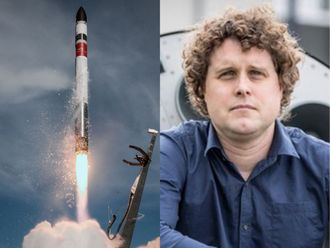It was with qualified optimism that Ian Read, Pfizer’s chief executive, boarded his private jet to London on the penultimate day of April, just 48 hours after launching a $102 billion (Dh374 billion) bid for UK rival AstraZeneca.
The deal would be the largest foreign takeover of a UK company, but the conditions were ripe: the risk aversion besetting corporate ideology since the financial crisis had started to evaporate, particularly in health care, and investors were seemingly welcoming any deal put before them — the bigger the better.
Yet a month later Pfizer’s deal was dead; flattened by a tide of political pressure and adverse publicity about the job cuts and harm to British industry such a takeover would effect. That such a sizeable transaction could fail and global M&A still enjoy its best six months since 2007 is testament to a deal market that is recovering not in fits and bursts but with confident thrust.
The value of global M&A hit $1.75 trillion during the six months to July, an increase of 75 per cent over 2013 and the strongest year-on-year increase since the late 1990s, according to data from Thomson Reuters. Such has been the strength of the recovery that dealmakers, long starved of activity, have found themselves overwhelmed by the number of companies wanting to transact and are running large backlogs of prospective deals.
Also, and in contrast to other recent spikes, the increase in activity levels, while not divided equally, has not been limited to a few sectors undergoing structural changes disconnected from the wider economy.
“People are now prepared to look at opportunities to transform their businesses through M&A,” says Rick Leaman, managing partner at Moelis & Co, the investment bank. “Even as recently as last year, there was just no appetite for doing things that risked the company”.
Deleveraging
He eschews comparisons with the last sustained period of M&A activity, however. “The big difference between now and 2007 is that there has been a lot of deleveraging in the banking system. It is a different ball game in terms of credit market regulation, so you won’t see the same level of risk going into the financial system”.
Piero Novelli, chairman global M&A at UBS, adds that the market is entering the last phase of an M&A cycle, “where you see several quarters of real, transformational transactions. But the deals, while large, are well thought out and have often been long in the works — waiting for the right market conditions”.
One of the hallmarks of the recent run of dealmaking has been the size of transactions. While the overall value of deals has soared globally, the number of transactions is the lowest it has been for a decade. The average size of deals of more than $50 million so far this year is $695 million, compared with $491 million last year. The swing toward scale is a function of the two busiest sectors for deals having been health care and telecoms, respectively.
Both industries are already highly consolidated, meaning the deals being undertaken typically involve targets - and acquirers — worth many billions of dollars. This is particularly true in health care, where a flurry of deals worth in excess of $10 billion helped M&A in the sector hit $317.4 billion year-to-date, nearly triple the levels seen in 2013.
Drew Burch, head of healthcare M&A at Barclays, identifies a confluence of factors driving the activity. “We are in a period of very active portfolio repositioning, where the big healthcare companies are all trying to become more dominant in whatever areas they want to specialise. On top of that, there is the tax inversion dynamic.
“The ideas aren’t new, but they are now being supported by a general shift in shareholder sentiment towards M&A. The combination of those factors has created a 100-year storm in healthcare M&A.”
Rakesh Patel, co-head of EMEA healthcare coverage at JPMorgan, says management and boards are feeling emboldened to pursue deals “against a backdrop of search for growth because of healthy share price gains, a more benign regulatory approval environment and a surplus of cash on balance-sheets.”
Corporate tax bill
The trend of tax inversions — where US companies look to use acquisitions of foreign rivals as a way to re-domicile, or invert their headquarters, thus lowering their corporate tax bill — has informed many of the largest deals attempted this year. Both Medtronic’s $48 billion bid for Covidien and Abbvie’s $47.5 billion bid for Shire are underpinned by a desire on the part of the acquirers to relocate.
Indeed, Pfizer’s pursuit of AstraZeneca was motivated, in part at least, by the impact such a deal would have had on the US group’s tax rate.
In spite of the abrupt acceleration in M&A, and the inevitable questions that provokes about bubbles, many advisers and industry experts believe the deals being done now mark the start of a long-awaited return to normal market conditions.
“I see no signs of collapse in M&A,” says Scott Barshay, a mergers and acquisitions lawyer at Cravath. “Everything to under pin an upward cycle exists; as long as debt stays cheap and the market keeps rewarding smart deals, we will continue to see a strong activity.”
Financial sponsor deal making is one segment of the market dealmakers are hopeful will heat up in the next quarter as buyout groups have largely remained sellers of their portfolio companies and have raised big, new funds.
“The exit rate for private equity has been low over recent years,” says Johannes Groeller, co-head of M&A for EMEA at Morgan Stanley. “But, with the environment for M&A transactions improving and strong valuations achievable we expect there to be a significant pick up in sponsor exit activity over the coming months.”
Financial Times












